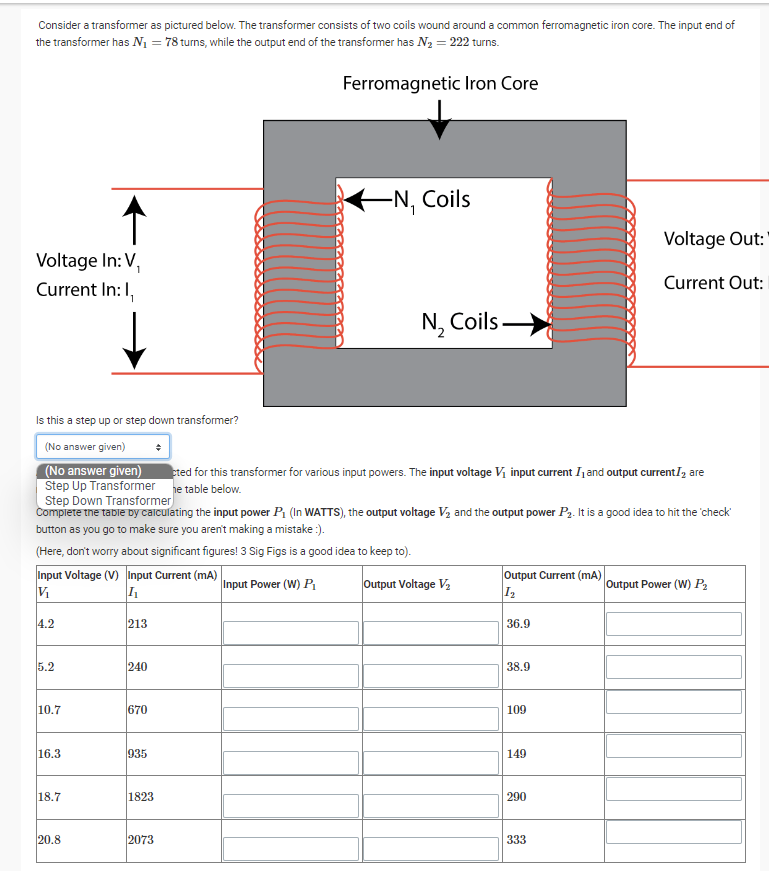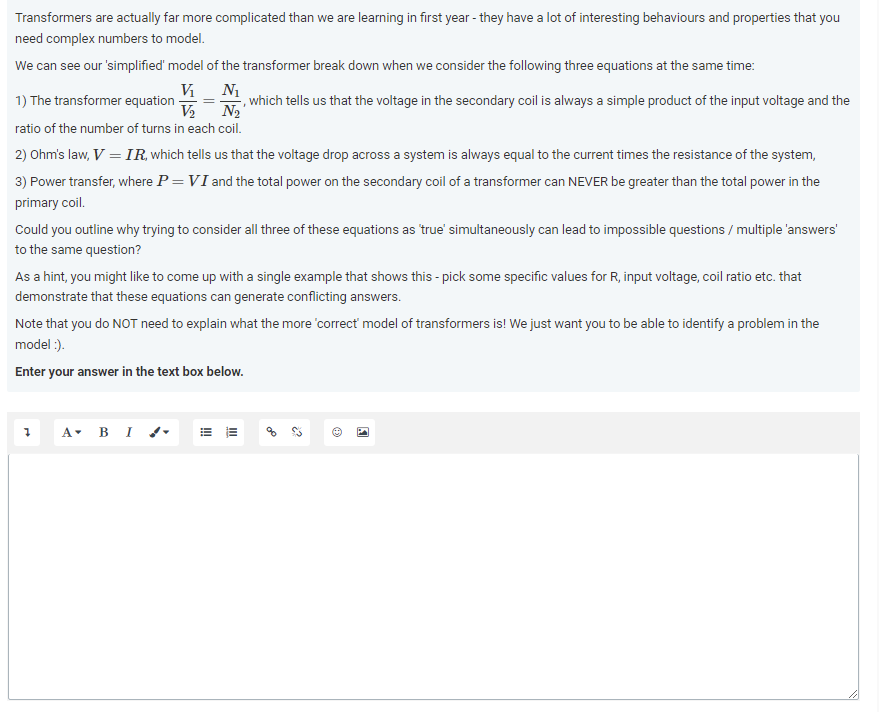Home /
Expert Answers /
Physics /
consider-a-transformer-as-pictured-below-the-transformer-consists-of-two-coils-wound-around-a-com-pa757
(Solved): Consider a transformer as pictured below. The transformer consists of two coils wound around a com ...
Consider a transformer as pictured below. The transformer consists of two coils wound around a common ferromagnetic iron core. The input end of the transformer has N? = 78 turns, while the output end of the transformer has N? = 222 turns. Ferromagnetic Iron Core Voltage In: V? Current In: I, 4.2 5.2 Is this a step up or step down transformer? (No answer given) ? (No answer given) Step Up Transformer Step Down Transformer Complete the table by calculating the input power P? (In WATTS), the output voltage V? and the output power P?. It is a good idea to hit the 'check' button as you go to make sure you aren't making a mistake :). (Here, don't worry about significant figures! 3 Sig Figs is a good idea to keep to). Input Voltage (V) Input Current (mA) Input Power (W) P? Output Voltage V? V? I? 10.7 16.3 18.7 20.8 213 240 670 935 1823 -N, Coils 2073 N? Coils. cted for this transformer for various input powers. The input voltage V? input current I? and output currentI? are he table below. Output Current (mA) 1? 36.9 38.9 109 149 Voltage Out: Current Out: 290 333 Output Power (W) P?
Transformers are actually far more complicated than we are learning in first year - they have a lot of interesting behaviours and properties that you need complex numbers to model. We can see our 'simplified' model of the transformer break down when we consider the following three equations at the same time: V?N? 1) The transformer equation N? ratio of the number of turns in each coil. - V? , which tells us that the voltage in the secondary coil is always a simple product of the input voltage and the 2) Ohm's law, V = IR, which tells us that the voltage drop across a system is always equal to the current times the resistance of the system, 3) Power transfer, where P = VI and the total power on the secondary coil of a transformer can NEVER be greater than the total power in the primary coil. Could you outline why trying to consider all three of these equations as 'true' simultaneously can lead to impossible questions / multiple 'answers' to the same question? As a hint, you might like to come up with a single example that shows this - pick some specific values for R, input voltage, coil ratio etc. that demonstrate that these equations can generate conflicting answers. 7 Note that you do NOT need to explain what the more 'correct' model of transformers is! We just want you to be able to identify a problem in the model :). Enter your answer in the text box below. A B I ?

